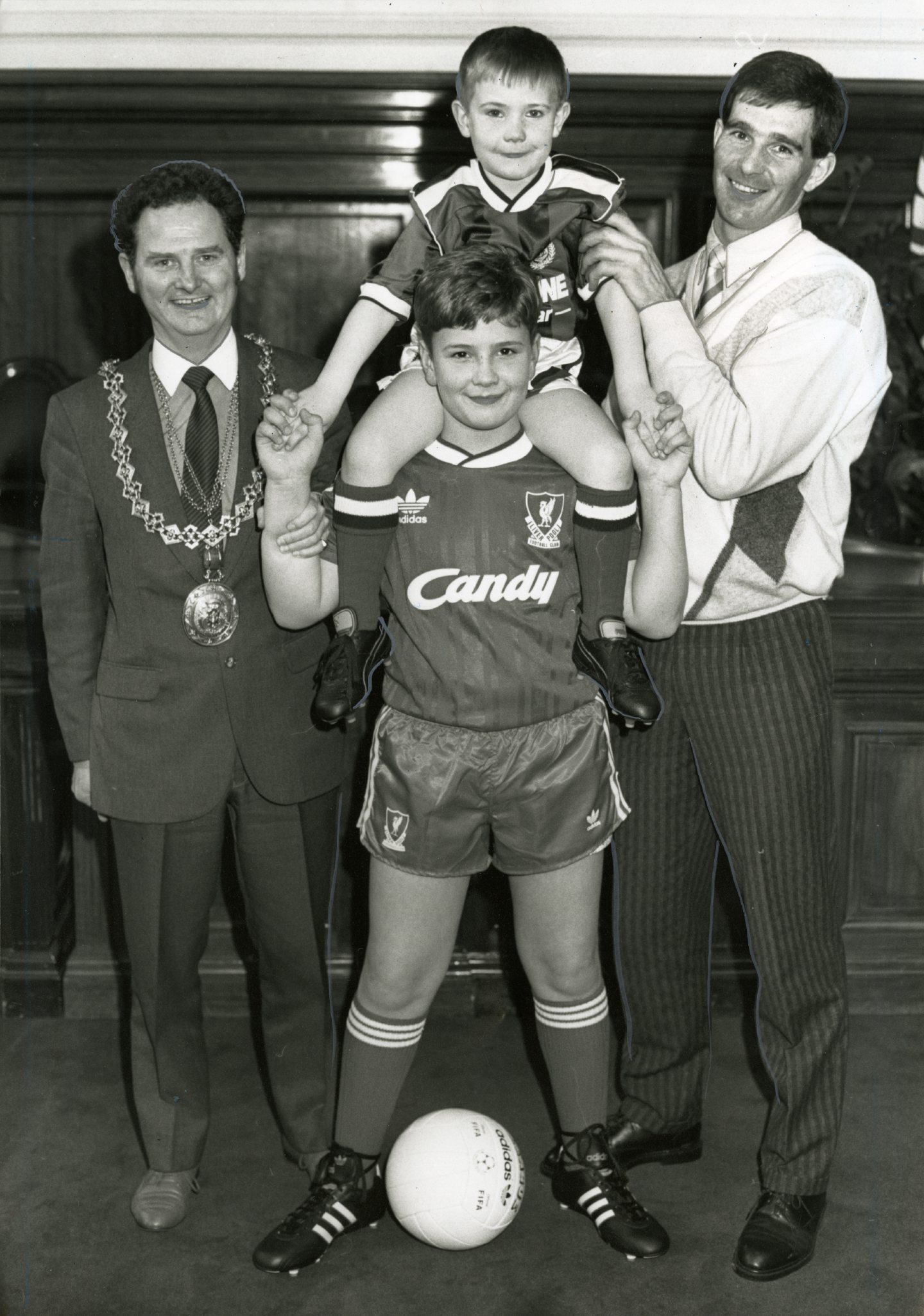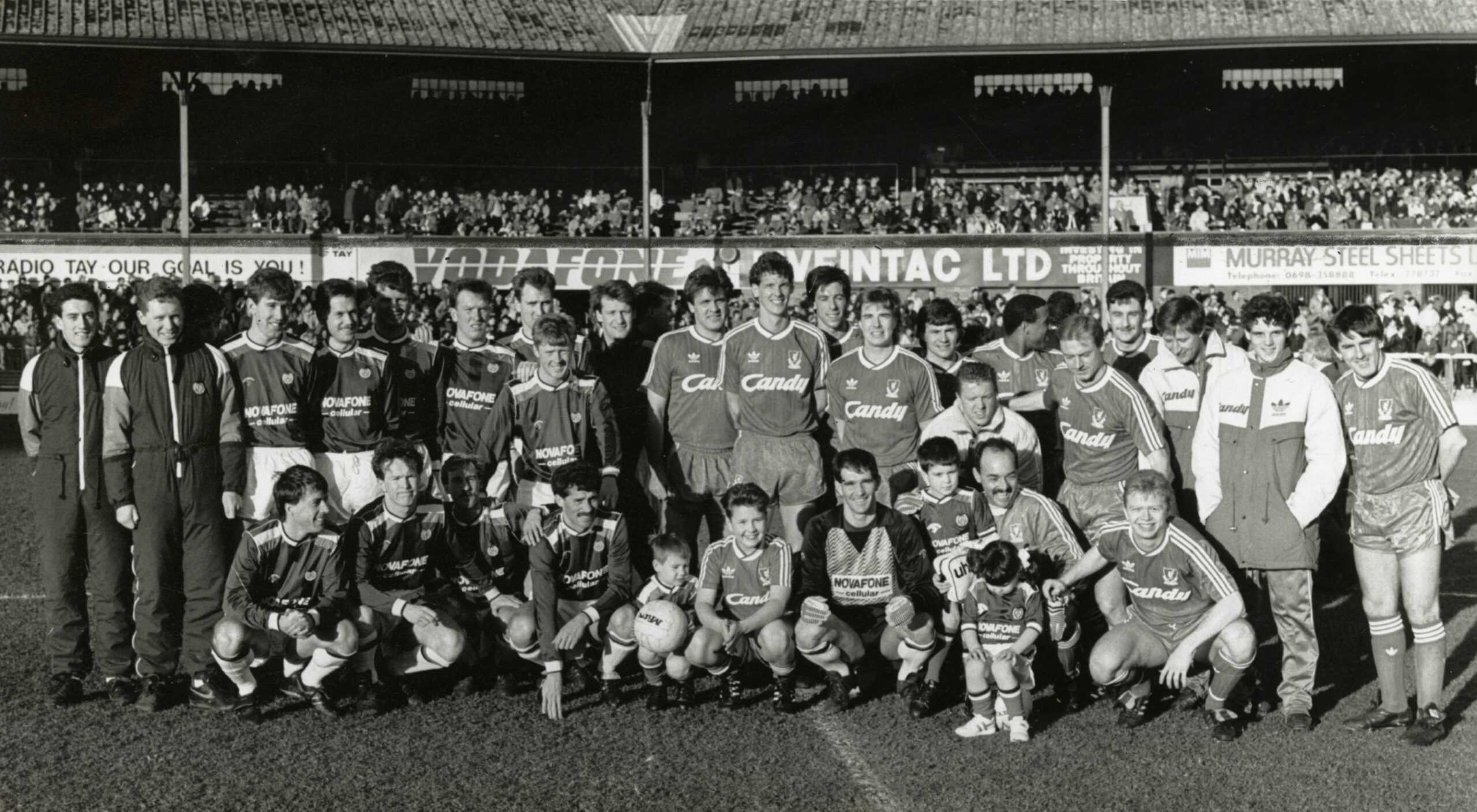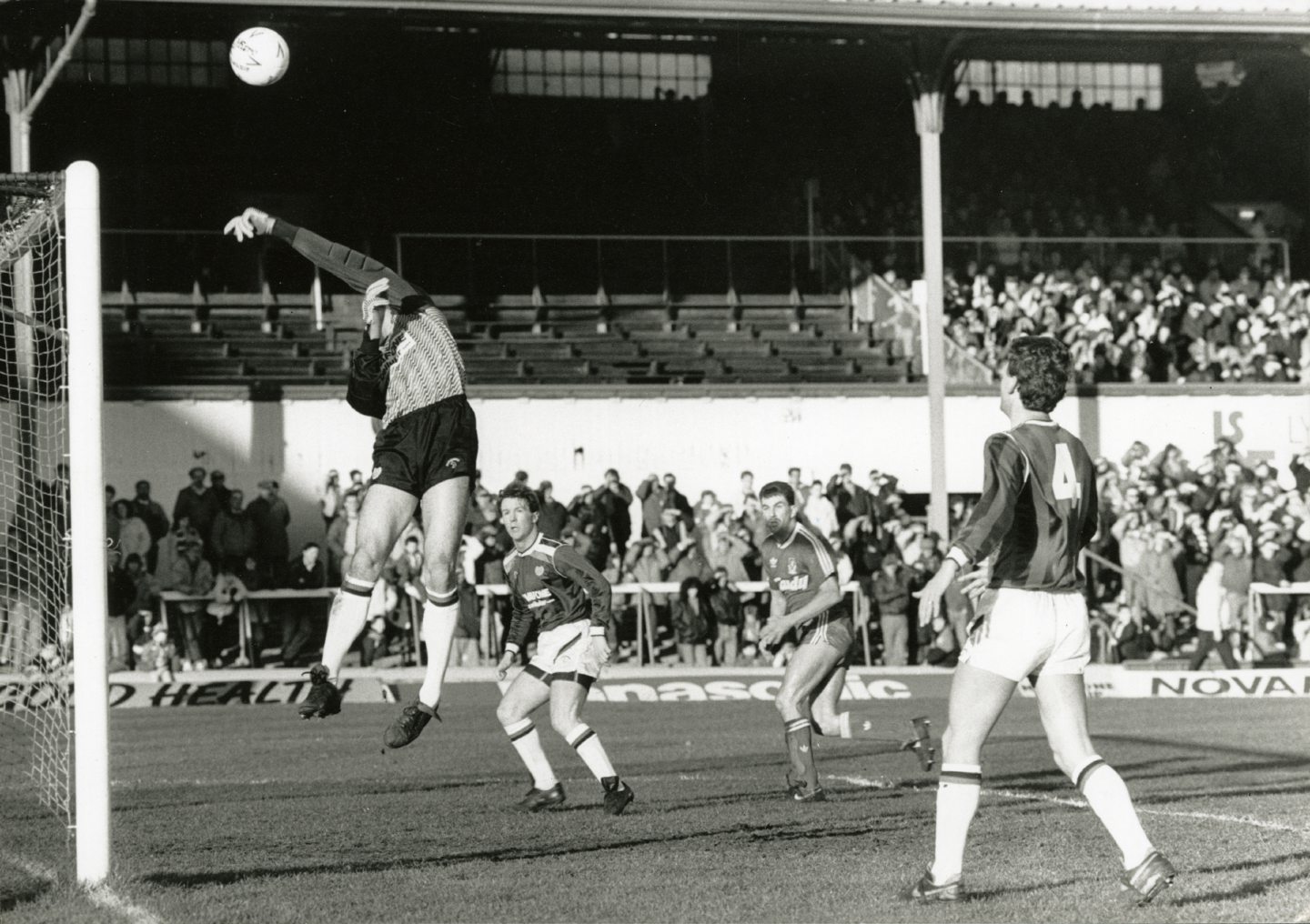
Liverpool left Dens Park spellbound for the second time in 16 months when they returned to honour a Dundee great in 1989.
Kenny Dalglish’s Anfield Reds headed north to provide the Sunday afternoon opposition in goalkeeper Bobby Geddes’ testimonial on February 12 with tickets £3.
The English title holders agreed to return after winning 4-0 against the Dens Parkers on October 19 1987 at the climax of George McGeachie’s testimonial year.
The star players had remained and one in particular had returned with Ian Rush arriving back in August 1988 after an unhappy spell at Juventus for a fee of £2.8m.
“It’s a great honour to have Liverpool here,” said Geddes.
“They are the pinnacle of English football and play a total passing game.
“I’m obviously hoping for a quiet afternoon, but I think I can expect to be busy.”
A miracle return from injury
Signed by Tommy Gemmell in September 1977, Geddes made his debut at Dens in an Anglo-Scottish Cup tie against Sheffield United on September 11 1978.
Geddes became first-choice under Donald Mackay in 1980 but sustained a knee injury just before Christmas against Hibs which would have put many out of the game.
The surgeon had to “redirect a ligament” to tighten up the knee and Geddes had to modify his kicking but battled back with the help of physiotherapist Eric Ferguson.
It was a testament to his character that he was able to return at all.
Geddes regained his place for the 1981/82 season and was a steady presence in goal during the 1980s despite competition from Colin Kelly and Tom Carson.
A crowd of 9,311 turned out including 1,000 Liverpool fans in the TC Keay end.
Ian Rush was unable to play because of injury but there was no shortage of finishers.
Peter Beardsley and John Aldridge were leading the line while John Barnes, Ray Houghton, Steve McMahon and Jan Molby provided the silk and steel in midfield.
Gary Ablett, David Burrows and Barry Venison made up the back four alongside Scotland international Gary Gillespie who was coming back from injury.
Bruce Grobbelaar was between the sticks.
There have been better Dundee teams to grace the occasion.
John Blackley was still in temporary charge following the resignation of Dave Smith in January 1989 after winning only five of 24 Premier League games.
A Scottish Cup exit to city rivals Dundee United on January 28 was followed by a 4-1 defeat to Hearts at Tynecastle 24 hours before Liverpool pitched up at Dens.
Bob Valentine from Dundee was the man in the middle.
This was a competitive affair with the big names turning it on in honour of Geddes.
And those who were there that day were fully aware of what they had witnessed.
Molby pulled the strings without seeming to leave the centre circle which gave the more expressive talents like Barnes the opportunity to wreak havoc elsewhere.
Geddes pulled off a number of excellent saves in the opening exchanges.
He could do nothing about the opening goal on 27 minutes when Houghton struck a left-foot volley from 25 yards following a poor clearance from Steve Campbell.
Liverpool rarely got out of second gear but they were still too strong.
What was surprising was Dundee were only one down at the break.
Both sides rung the changes.
Dundee’s top scorer Tommy Coyne came on for Stephen Frail while 19-year-old Bootle youngster Mike Marsh replaced John Aldridge for Liverpool.
Dundee equalised on the hour mark
Dundee hit back after the break and a fine run by Stuart Rafferty on 62 minutes earned a penalty when Bruce Grobbelaar pulled him down.
The Dundee fans called for the spot kick to be taken by Bobby Geddes.
He politely declined.
Coyne made no mistake with the kick.
The Anfield side, who always played to win, immediately moved up a gear and Marsh showed quick reactions to restore the lead on 69 minutes from close range.
Dalglish received a tremendous ovation when he replaced David Burrows with 20 minutes to go and there were more roars when another legend departed.
Geddes was replaced by 19-year-old goalkeeper Paul Mathers and the two sets of supporters joined together in a standing ovation for the man of the hour.
It was a reception befitting of his standing at Dens Park.
Marsh wrapped up the victory and made it 3-1 on 71 minutes.
Barnes beat Mathers to a through ball then hit both posts with a lovely chip.
Marsh was left with the simple task of tapping in on the line.
Dundee seldom looked like pulling back the 3-1 deficit although no one could accuse them of lacking effort against their more illustrious opponents.
The Courier “sports editor” described Liverpool’s performance as “genuine class”.
He said: “As I watched, the years rolled back to the early days of the Bill Shankly-inspired revival at Anfield.
“Shankly and his successors, Bob Paisley, Joe Fagan and now Kenny Dalglish, have always viewed football as a simple game if played properly and, here again, we had the proof.
“All I can say as a summing up is ‘Haste ye back!’ to a team who have genuinely have shown football as ‘the beautiful game’ in their two recent visits.”
From triumph to tragedy
Bobby Geddes was overwhelmed with the reception he was given.
“I thank everyone who bought a ticket,” he said.
On his own substitution he said he wanted to give Mathers a chance against that class of opposition because the teenager had been playing well in the reserve team.
It was an incredible gesture and a true measure of the man.
Kenny Dalglish described Gillespie’s appearance as part of his “progression to fitness”.
“It was good for us that he came through and it was also a good result,” he said.
“It got us away from the training ground and into a real game.”
King Kenny and the Liverpool players spent the following day on the golf course at Letham Grange near Arbroath which was once tagged the “Augusta of the North”.
They headed back to Liverpool afterwards on a bus journey through heavy snow to prepare for the FA Cup fifth round tie against Hull City at Boothferry Park.
Of course, this would prove to be the calm before a terrible storm.
We all know that the great decade came to an end on a tragic and mournful note when the Hillsborough tragedy on April 15 1989 claimed the lives of 96 Liverpool fans.
A tragic footnote in the story of a team which gave us so much joy.
















Conversation